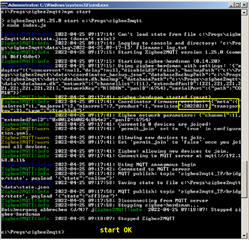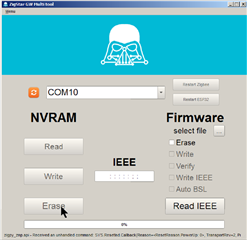Other Parts Discussed in Thread: Z-STACK, CC1352P, CC2652R, SYSCONFIG
Hi, I am the very end user. I baught a Zigbee USB gateway with a CC2652P chip to have the high RF power of +20 dBm for longer distances. I flashed the newest Z-Stack coordinator firmware 'CC1352P2_CC2652P_launchpad_coordinator_20220219', and expected to have the high RF power available. But the USB stick fires disappointingly with very low power, presumably ~ 5 dBm (or lower?) - this indepently on the firmware powwer settings.
So I have searched for reasons in the available literature, and I found the following facts in the TI document SWCU185E (CC13x2, CC26x2 Technical Reference Manual):
In table 11-64 "USER_ID Register Field Descriptions" Bit 25 is explained:
> PA = 0: 'Does not support 20 dBm PA)
> PA = 1: 'Supports 20 dBm PA)
> Default value differs depending on partnumber.
Do I understand this correctly?
If this PA Bit is set to zero, no firmware in the world can't turn on high RF power???
I used the TI SmartRF Flash Programmer 2 to read oud the USER_ID information at address 0x294, and found '00'; that means all 8 bits equal zero -> PA bit = 0. If my previously asked question is to be answered with "yes", then this would probably be the explanation.
I tried to set the first byte to '02' (PA bit = 1) and to write back the data block, but the flash program acknowledged this action with an error message:
"Erasing info page not supported via serial bootloader".
How can I set this PA bit to 1?










